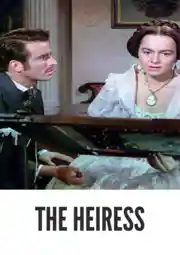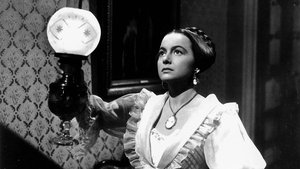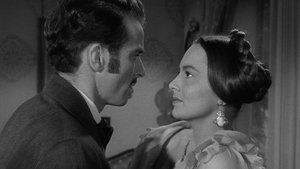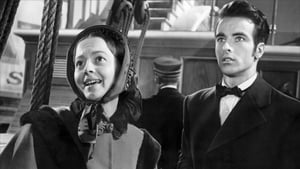Contact: [email protected]
Video Sources 0 Views

Synopsis
[ez-toc]




Introduction
In the ever-evolving landscape of cinema, there’s a timeless allure in revisiting old movies, unearthing treasures that have stood the test of time. One such gem is “The Heiress Colorized 1949,” a classic American drama directed by the illustrious William Wyler. The film, originally in black and white, has been transformed through the meticulous process of colorization, breathing new life into its narrative while preserving the essence of its era. In this article, we delve into the captivating world of “The Heiress Colorized,” exploring its plot, performances, and the contentious yet fascinating realm of colorizing old films.
Read Media File Transfer Agreement: Terms and Conditions
Read FAQ
The Timeless Appeal of “The Heiress Colorized”
In the post-World War II era, William Wyler masterfully directed “The Heiress,” adapting the play by Ruth and Augustus Goetz, which itself was based on Henry James’s novel “Washington Square.” Set against the backdrop of 19th-century New York, the film follows the life of Catherine Sloper, played by the iconic Olivia de Havilland. Catherine, a wealthy but socially awkward heiress, falls in love with the charming Morris Townsend, portrayed by Montgomery Clift. The narrative unravels with an intricate dance of emotions, betrayal, and societal expectations.
Wyler’s direction skillfully captures the emotional depth of the story, immersing the audience in the complex world of Catherine Sloper. The film benefits from the stark contrast of black and white, emphasizing the societal constraints and emotional nuances of the characters. Olivia de Havilland’s performance as Catherine earned her an Academy Award for Best Actress, a testament to her ability to convey the character’s vulnerability and strength.
As we journey through the black-and-white landscape of “The Heiress Colorized,” the lack of color becomes a deliberate artistic choice, adding a layer of intensity to the narrative. The shadows and contrasts heighten the drama, allowing the audience to connect with the characters on a profound level. The decision to preserve this original vision or introduce color becomes a subjective choice, opening the door to explore the film in a new light.
Bringing Classic Cinema to Life with Color
Colorizing old movies is an art form that elicits both excitement and controversy. The process involves adding color to black-and-white films, utilizing advanced digital techniques to recreate an authentic and visually appealing experience. While purists argue that colorization compromises the integrity of the original work, proponents see it as a way to make classic cinema more accessible to modern audiences.
The debate surrounding colorization has evolved over the years, with advancements in technology allowing for more nuanced and faithful adaptations. The goal is not to alter the filmmaker’s vision but to enhance the viewer’s connection to the story. In the case of “The Heiress Colorized 1949,” the challenge lies in balancing the desire for a modern viewing experience with the preservation of the film’s historical context.
Examining the intricacies of colorization, one must appreciate the dedication to authenticity. Technicians painstakingly research the era, costumes, and set designs to recreate the palette of the time accurately. This attention to detail ensures that the colorized version maintains the intended atmosphere and mood of the original film.
Examining the Cast, Production, and Critical Reception
The success of “The Heiress Colorized” hinges not only on Wyler’s direction but also on the stellar performances of the cast. Olivia de Havilland’s portrayal of Catherine Sloper is a delicate balance of fragility and resilience, earning her acclaim and the adoration of audiences. Montgomery Clift brings charisma and complexity to Morris Townsend, while Ralph Richardson delivers a nuanced performance as Dr. Sloper, Catherine’s stern and disapproving father.
The production design and cinematography contribute significantly to the film’s impact. The meticulous recreation of 19th-century New York transports viewers to a bygone era, immersing them in the societal constraints that shape Catherine’s world. The cinematography, highlighted by the interplay of light and shadow, adds depth to the characters and underscores the emotional weight of the narrative.
Upon its release, “The Heiress Colorized” received critical acclaim, earning several Academy Award nominations and securing Olivia de Havilland’s well-deserved Oscar. The film has since found its place in the National Film Registry, a testament to its enduring cultural significance. The journey from initial reception to becoming a recognized classic mirrors the evolution of audience tastes and the enduring appeal of well-crafted storytelling.
Influence on Pop Culture and Subsequent Adaptations
“The Heiress Colorized” transcends its time, leaving an indelible mark on popular culture. The characters of Catherine Sloper, Dr. Sloper, and Morris Townsend continue to influence portrayals of complex relationships in films, television shows, and literature. The enduring themes of love, betrayal, and societal expectations resonate across generations, ensuring the film’s legacy.
Subsequent adaptations and reinterpretations draw inspiration from “The Heiress Colorized,” exploring the complexities of human relationships in diverse settings. The film’s impact extends beyond the silver screen, seeping into the collective consciousness and shaping our understanding of love, loss, and the human condition.
Preserving the Intended Themes through Colorization
As we navigate the realm of colorization, the question arises: does adding color enhance or diminish the intended themes of “The Heiress Colorized”? The moral dilemmas faced by Catherine Sloper, the societal expectations weighing on her shoulders, and the complexities of love are integral to the story. Colorization has the potential to accentuate these themes by providing visual cues and nuances that may be lost in black and white.
However, the risk lies in the delicate balance between enhancement and alteration. The moral fabric of the narrative may be influenced by the introduction of color, potentially shifting the emotional dynamics between characters. To gauge the success of colorization, we must examine whether the film’s core themes align with the original vision presented in Henry James’s novel.
The Verdict: Is “The Heiress Colorized” Successfully Transformed in Color?
In scrutinizing the colorized version of “The Heiress Colorized,” it is crucial to evaluate its impact on the overall viewing experience. Does the addition of color breathe new life into the film without overshadowing its original charm? To answer this, we must delve into key scenes and compare the black-and-white and colorized counterparts.
The climactic moments, such as Catherine’s confrontations with her father and Morris, are pivotal in determining the success of colorization. The emotional resonance of these scenes, carefully crafted by Wyler and executed by the cast, must remain intact. If colorization enhances the visual impact while staying true to the director’s vision, it can be deemed a successful adaptation.
Embracing the Beauty of Classic Films in Every Shade
In concluding our exploration of “The Heiress Colorized 1949,” it is evident that classic films possess a timeless beauty that transcends the limitations of black and white. The colorization of old movies opens new avenues for audiences to connect with cinematic masterpieces, offering a fresh perspective on narratives that have captivated generations.
“The Heiress Colorized” stands as a testament to the enduring appeal of classic cinema, and the decision to colorize it adds another layer to its rich tapestry. As we embrace the beauty of classic films in every shade, let us appreciate the dedication to preserving cinematic history while adapting to the evolving preferences of contemporary audiences.
In the grand tapestry of cinema, “The Heiress Colorized 1949” is a thread woven with care and consideration, connecting the past to the present and inviting audiences to rediscover the elegance of a bygone era.














